Lawn Turf Installation in Petersham: Transform Your Outdoor Space
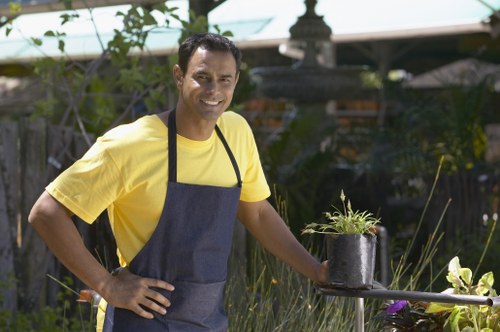
Creating a lush, green lawn is a dream for many homeowners in Petersham. Whether you're looking to enhance your garden's aesthetics, create a safe play area for children, or increase your property's value, professional lawn turf installation can make all the difference.
Choosing the right turf and ensuring proper installation are crucial steps to achieving a beautiful and lasting lawn. In this comprehensive guide, we'll explore everything you need to know about lawn turf installation in Petersham, from selecting the best turf types to maintenance tips that keep your lawn looking pristine.
Understanding the process of lawn turf installation is essential for making informed decisions and achieving the desired outcome. Let's delve into the key aspects that will help you transform your outdoor space into a vibrant and inviting area.
Why Choose Lawn Turf Installation?
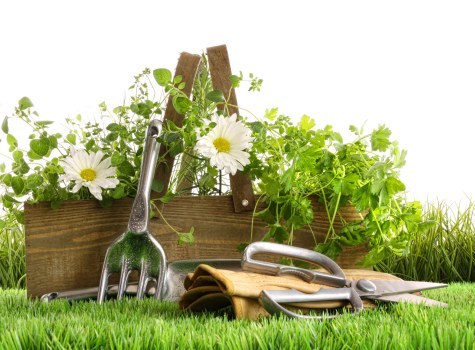
Lawn turf installation offers numerous benefits that go beyond mere aesthetics. A well-maintained turf lawn can improve the overall ambiance of your property, provide a comfortable area for outdoor activities, and contribute to environmental sustainability.
Unlike artificial lawns, natural turf offers a cooling effect during hot summers, supports local biodiversity, and enhances the property's curb appeal. Additionally, professionally installed turf requires less maintenance in the long run compared to other landscaping options.
Investing in quality lawn turf installation ensures that your lawn remains healthy, resilient, and beautiful throughout the year, making it a valuable addition to your home in Petersham.
Choosing the Right Type of Turf
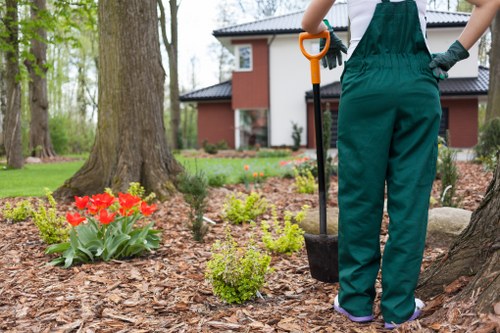
Selecting the appropriate type of turf is fundamental to the success of your lawn installation. The choice depends on various factors, including climate, soil type, and the intended use of the lawn.
In Petersham, popular turf varieties include Kikuyu, Buffalo, and Couch grass. Kikuyu is known for its durability and rapid growth, making it ideal for high-traffic areas. Buffalo grass offers a soft texture and is highly drought-resistant, suitable for regions with limited water supply. Couch grass provides a fine texture and dense growth, perfect for low-maintenance lawns.
Consulting with local turf specialists can help you determine the best grass type for your specific needs and environmental conditions, ensuring a thriving and sustainable lawn.
Preparing Your Lawn for Installation
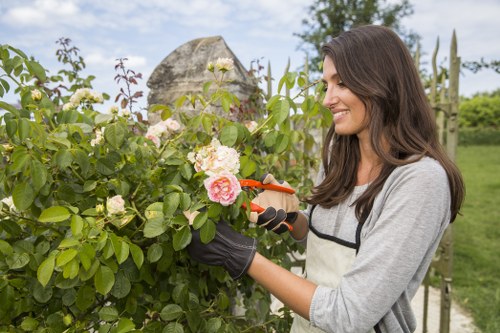
Proper preparation is key to successful turf installation. This involves clearing the area, improving soil quality, and ensuring adequate drainage to prevent waterlogging.
Start by removing any existing vegetation, weeds, and debris from the installation site. Then, till the soil to a depth of at least 15 centimeters, incorporating organic matter like compost to enhance fertility and structure. Level the ground to eliminate any unevenness that could disrupt the turf laying process.
Additionally, installing a drainage system or improving natural drainage can help maintain soil moisture levels, promoting healthy grass growth and reducing the risk of turf damage from excess water.
The Installation Process
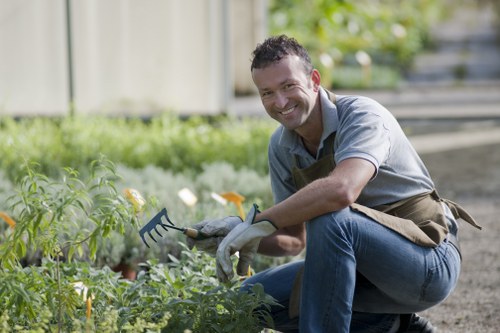
Professional lawn turf installation typically follows a systematic process to ensure optimal results. Here's a step-by-step overview:
- Site Assessment: Evaluate the installation area for soil quality, sunlight exposure, and drainage conditions.
- Soil Preparation: Clear the area, till the soil, add necessary amendments, and level the surface.
- Turf Selection: Choose the appropriate turf type based on your preferences and environmental factors.
- Rolling and Laying: Roll out the turf sheets, ensuring they are tightly fitted together to minimize gaps.
- Watering: Immediately water the newly laid turf to help it establish roots.
- Maintenance: Regularly mow, fertilize, and water the lawn as needed to maintain its health and appearance.
Benefits of Professional Installation
While DIY turf installation is possible, hiring professionals offers several advantages:
- Expertise: Professionals have the knowledge and experience to select the right turf and prepare the soil correctly.
- Efficiency: Skilled installers can complete the job quickly and accurately, minimizing disruption to your property.
- Quality Assurance: Professional services often come with guarantees, ensuring the turf is laid to the highest standards.
- Long-Term Support: Many installers provide maintenance services and ongoing support to keep your lawn healthy.
Opting for professional lawn turf installation in Petersham can save you time, effort, and potential mistakes, leading to a superior and long-lasting lawn.
Maintenance Tips for a Healthy Lawn
Proper maintenance is essential to keep your turf lawn in top condition. Here are some key maintenance practices:
- Regular Mowing: Maintain the grass at an optimal height, generally between 2.5 to 5 centimeters, to promote dense growth.
- Watering: Water the lawn deeply and infrequently to encourage deep root development. Early morning is the best time to water.
- Fertilizing: Apply appropriate fertilizers to supply essential nutrients, supporting healthy grass growth.
- Weed Control: Remove weeds promptly to prevent them from competing with the grass for resources.
- Aeration: Aerate the soil annually to improve air circulation and reduce soil compaction.
Consistent maintenance habits will ensure your lawn remains vibrant, resilient, and a beautiful feature of your Petersham home.
Local Considerations in Petersham
When installing lawn turf in Petersham, it's important to consider local climatic conditions and soil characteristics. Petersham experiences a temperate climate with moderate rainfall, which is conducive to various grass types.
Additionally, the soil in Petersham may vary, so conducting a soil test can help identify any deficiencies or pH imbalances that need to be addressed before installation. Tailoring your turf selection and soil preparation to the local environment enhances the likelihood of a thriving lawn.
Local regulations and water restrictions should also be taken into account, ensuring that your lawn installation complies with community guidelines and sustainable practices.
Sustainable Turf Practices
Embracing sustainable practices in lawn turf installation not only benefits the environment but also promotes a healthier lawn. Consider the following eco-friendly approaches:
- Organic Fertilizers: Use natural fertilizers to reduce chemical runoff and improve soil health.
- Rainwater Harvesting: Collect and utilize rainwater for irrigation, conserving water resources.
- Native Grass Varieties: Choose grass types that are native or well-adapted to the local climate, requiring less water and maintenance.
- Composting: Incorporate compost into the soil to enhance fertility and structure without synthetic additives.
Implementing these sustainable methods ensures your lawn remains environmentally friendly and cost-effective, while also fostering a robust and resilient grass cover.
Cost Factors in Lawn Turf Installation
Understanding the cost components involved in turf installation can help you budget effectively. Several factors influence the overall expense:
- Turf Type: Premium grass varieties may cost more but offer superior durability and aesthetics.
- Area Size: Larger lawns require more turf and labor, increasing the total cost.
- Soil Preparation: Extensive groundwork, including soil amendments and grading, can add to the expenses.
- Labor: Hiring professional installers typically costs more than a DIY approach but ensures quality results.
- Additional Features: Incorporating elements like drainage systems, edging, or irrigation can influence the overall price.
Obtaining multiple quotes and discussing your specific requirements with installers can provide a clearer picture of expected costs, allowing you to make informed financial decisions for your Petersham lawn project.
Common Mistakes to Avoid
Even with professional help, being aware of common pitfalls can ensure a smoother turf installation process:
- Poor Soil Preparation: Neglecting to prepare the soil properly can lead to turf failure and uneven growth.
- Incorrect Turf Selection: Choosing a grass type unsuitable for the local climate or intended use can result in poor performance.
- Inadequate Watering: Failing to provide sufficient water during the initial establishment phase can hinder root development.
- Improper Installation: Laying turf improperly, such as overlapping or leaving gaps, can cause patchy growth and weed infestations.
- Ignoring Maintenance: Skipping regular maintenance tasks like mowing and fertilizing can diminish the lawn's health and appearance.
By recognizing and avoiding these mistakes, you can ensure a successful lawn turf installation that stands the test of time.
Local Providers in Petersham
Petersham boasts several reputable lawn turf installation providers known for their quality work and customer satisfaction. When selecting a provider, consider their experience, range of services, and customer reviews to ensure you choose a trustworthy and competent team.
Many local providers offer tailored solutions to meet the unique needs of Petersham homeowners, including soil testing, customized turf selection, and comprehensive maintenance packages. Engaging with a local expert ensures that your lawn installation aligns with the area's specific environmental conditions and community standards.
Don't hesitate to reach out to multiple providers for consultations and quotes to find the best fit for your project and budget.
Enhancing Your Lawn with Additional Features
Once your turf is installed, consider adding features that enhance functionality and beauty:
- Edging: Define the boundaries of your lawn with stylish edging materials like brick, stone, or plastic.
- Irrigation Systems: Automated watering systems ensure consistent moisture levels, reducing manual effort.
- Lawn Furniture: Adding seating areas, benches, or outdoor dining sets creates inviting spaces for relaxation and entertainment.
- Pathways: Incorporate walkways using materials like gravel, pavers, or mulch to guide movement and prevent turf damage.
- Plantings: Complement your lawn with flower beds, shrubs, or trees to add color and diversity to your garden.
These enhancements not only improve the functionality of your outdoor space but also increase your property's overall appeal and value.
Seasonal Care for Your Lawn
Different seasons require specific care routines to maintain a healthy and vibrant lawn:
- Spring: Begin with aeration and overseeding to repair any winter damage. Apply a balanced fertilizer to kickstart growth.
- Summer: Focus on regular watering and mowing. Protect the lawn from heat stress by providing adequate shade and avoiding overexposure.
- Autumn: Prepare the lawn for winter by clearing fallen debris and applying a slow-release fertilizer to strengthen roots.
- Winter: Minimize foot traffic and avoid cutting the grass too short to prevent damage from frost and snow.
Adapting your maintenance practices to the changing seasons ensures that your turf remains resilient and continues to thrive throughout the year.
Local Climate Considerations
Petersham's climate, characterized by mild winters and warm summers, influences the choice of turf and maintenance strategies. Understanding local weather patterns helps in selecting grass varieties that can withstand temperature fluctuations and seasonal changes.
Choosing a turf that can handle both the heat of summer and the cooler months ensures year-round greenery and reduces the need for extensive maintenance. Additionally, adjusting watering schedules based on rainfall and temperature variations helps conserve water and keep the lawn healthy.
Long-Term Lawn Care Strategies
Planning for the long-term health and appearance of your lawn involves strategic care and management:
- Regular Fertilization: Maintain soil fertility by applying fertilizers at recommended intervals.
- Pest and Disease Management: Monitor the lawn for signs of pests or diseases and take prompt action to address issues.
- Lawn Renovation: Periodically renovate the lawn by re-tilling the soil and laying new turf to rejuvenate growth.
- Traffic Management: Limit heavy foot traffic to prevent soil compaction and turf damage.
- Continuous Improvement: Stay informed about the latest lawn care techniques and incorporate them into your maintenance routine.
Implementing these long-term strategies ensures that your Petersham lawn remains a beautiful and sustainable feature of your property for years to come.
Cost-Effective Maintenance Practices
Maintaining a beautiful lawn doesn't have to be expensive. Here are some cost-effective practices:
- DIY Maintenance: Handle basic tasks like mowing, weeding, and watering yourself to save on labor costs.
- Mulching: Use grass clippings and organic matter as mulch to retain soil moisture and reduce the need for frequent watering.
- Efficient Watering: Install rain barrels and use drip irrigation systems to minimize water wastage.
- Selective Fertilization: Target specific areas that need fertilization instead of treating the entire lawn uniformly.
- Preventive Care: Address minor issues promptly to avoid costly repairs and extensive treatments later on.
By adopting these economical approaches, you can maintain a healthy and attractive lawn without straining your budget.
Integrating Native Plants
Incorporating native plants alongside your turf can enhance biodiversity and reduce maintenance efforts:
- Pollinator Gardens: Plant flowers that attract bees, butterflies, and other pollinators, supporting local ecosystems.
- Drought-Resistant Species: Use native, drought-tolerant plants to complement your grass, conserving water and adding variety.
- Shade Plants: Integrate shrubs and trees that provide natural shade, reducing the lawn's water and maintenance needs.
- Perennial Flower Beds: Establish perennial beds to add color and texture, requiring less replanting over time.
These integrations create a sustainable and visually appealing landscape that works harmoniously with your turf, enhancing the overall beauty of your Petersham garden.
Environmental Benefits of a Healthy Lawn
A well-maintained lawn offers several environmental advantages:
- Air Purification: Grass absorbs carbon dioxide and releases oxygen, contributing to cleaner air.
- Water Filtration: Healthy turf acts as a natural filter, trapping pollutants and reducing runoff.
- Temperature Regulation: Grass helps cool the surrounding area by providing shade and releasing moisture into the air.
- Erosion Control: Deep-rooted grasses stabilize the soil, preventing erosion and maintaining landscape integrity.
- Habitat Support: Lawns provide habitats for various insects and small animals, promoting biodiversity.
By investing in lawn turf installation and maintenance, you're not only enhancing your property's appeal but also contributing positively to the environment.
Final Thoughts on Lawn Turf Installation in Petersham
Lawn turf installation in Petersham is a worthwhile investment that transforms your outdoor space into a vibrant, functional, and eco-friendly area. From selecting the right turf type to implementing sustainable maintenance practices, each step plays a vital role in achieving a healthy and attractive lawn.
Working with local professionals ensures that your installation is tailored to the specific conditions of Petersham, maximizing the lawn's resilience and beauty. With proper care and attention, your turf can become a lasting feature that enhances your home's value and provides a serene environment for relaxation and recreation.
Embrace the journey of transforming your garden with expert lawn turf installation, and enjoy the numerous benefits that a lush green lawn brings to your life and community.
Frequently Asked Questions

1. How long does it take for newly installed turf to establish?
Newly installed turf typically takes about two weeks to establish roots in the soil. Full establishment, where the grass is well-rooted and can withstand regular use, may take up to three months with proper care and maintenance.
2. What is the best time of year to install lawn turf in Petersham?
The optimal times for turf installation in Petersham are during the spring and early autumn. These seasons provide favorable weather conditions, allowing the grass to establish before extreme temperatures set in.
3. How often should I water my new turf?
For the first two weeks after installation, water the turf daily to keep the soil consistently moist. Afterward, gradually reduce the frequency to encourage deep root growth, typically watering 2-3 times per week depending on weather conditions.
4. Can I install turf on a slope or uneven ground?
Yes, turf can be installed on slopes or uneven terrain. However, it requires careful soil preparation and grading to ensure proper drainage and prevent erosion. Consulting with a professional installer is recommended for such projects.
5. How do I prevent weeds from growing in my new lawn?
Preventing weeds involves proper soil preparation, selecting high-quality turf, and maintaining healthy grass through regular mowing, watering, and fertilization. Additionally, applying a pre-emergent weed control product before installation can help minimize weed growth.